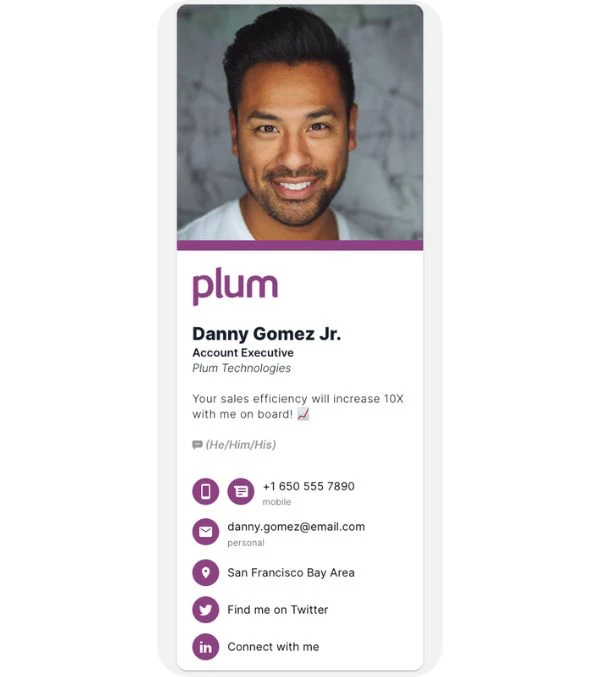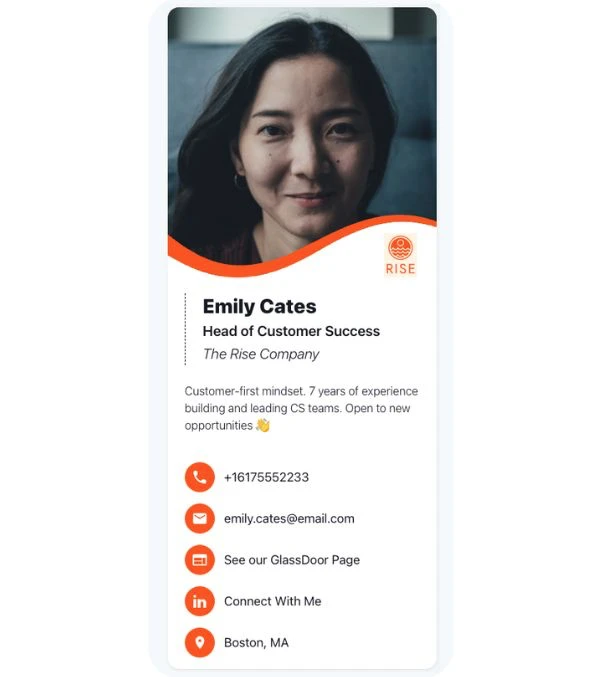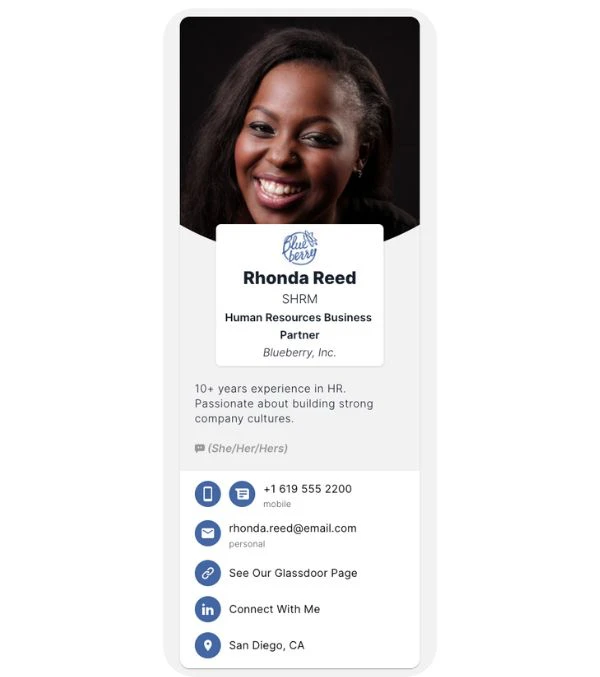.webp)
It’s no secret that the job market has seen a lot of volatility over the last few years. According to The Washington Post, a staggering 20 million people have lost their jobs since the pandemic began. And with recent mass layoffs, even more, are rejoining the job market.
As the economy continues to adjust, many companies are still looking to hire. There’s no question that one of the most important aspects of landing a new job is having an up-to-date, polished resume. This one piece of paper can easily be overlooked or could be a gateway to your dream job.
After graduating college what seems like a lifetime ago, I began my career as a recruiter. I was interviewing 10+ people a day, and I hate to admit it, but when you talk to that many people a day, you don’t always remember names or faces. One thing that always stood out to me—and I know it’s old-fashioned and probably outdated—was when candidates followed up. I appreciated the time they took to write me a quick thank you note, and it usually sparked my memory of the candidate.
Digital business cards weren’t around when I was a recruiter, but I wish they were—to have a candidate follow up with me with a business card that showed their headshot, name, and key accomplishments, well, that would’ve made my life much easier!
The next time you’re interviewing—or even are simply networking online—consider following up with a digital business card. It’ll show you’re serious and excited about the role, it’ll help jog the interviewer’s memory about who you are and your key accomplishments, and they won’t have to comb through all the resumes in their Applicant Tracking System to find your information. Instead, it’ll all be right at their fingertips—it’s a win-win for both parties! (Another quick interviewing pro-tip: If you’re interviewing over Zoom, you want to make sure the interviewer is focused on you, not on your background. Consider using a virtual background during your interview.)
The first step of following up with a digital business card is, well, making one. You’ll want to download HiHello on iOS, Android, or make an account on the web—HiHello lets you make and share digital business cards for free. After you set up your account and make your first card, you’ll want to tailor it specifically to your role.
No matter what industry you’re in or what role you’re looking for, there are a few items that you’ll always want to have on your business card while you’re on the job hunt. Before you begin customizing your card to your specific function, make sure you have the following information filled out.
You’ll want to have a professional (or semi-professional) headshot or picture of yourself on your digital business card. When you follow up with your interviewer with your card, you’ll want them to say, “Aha! I remember so-and-so!” when they see your headshot.
Looking to make your card even more memorable? Use a live photo or video to bring your personality to your digital business card. HiHello Professional users can upload a live photo or video to the top of their card just like a regular headshot.
It’s best to use whichever name you go by professionally. I recently got married, and because I went by my maiden name for so long I have my first name and my (new) last name on my card, and then have my maiden name in parentheses.
It’s important to include pronouns, preferred names, or any other important things like prefixes or suffixes as well.
You have a few options when it comes to your job title. You can either put your exact current or most recent title (like, Sales Manager), the title you want (Senior Sales Manager), or a general title (Sales).
Put the name of your employer if you are currently employed. If you are currently unemployed, you can leave this field blank, or write “Formerly @ [your former company’s name]”. (If you’re feeling bold, you could even put something like “Future [Insert Your Company Here] Employee!”)
Use your headline to summarize who you are, your accomplishments, and what you’re looking for. Get creative with it—think of it as your elevator pitch. Consider using emojis to break up different sentences or ideas—it can help with legibility and can add a certain “fun factor” to your card.
When you’re looking for a job, always put your email on your business card and resume. If you’re currently employed and are looking to leave said job, it’s best to put your personal email on your digital business card, not your work email.
Some people don’t like sharing their phone number, and that’s understandable. However, when you’re applying for jobs, you want to make it as easy as possible for a recruiter or potential employer to reach out to you. Most likely you’ll receive an email before someone contacts you by phone, but from a recruiter’s standpoint, a phone number is a nice-to-have.
One thing I would often see on resumes was the candidate’s home addresses. A full address isn’t necessary, especially these days when more and more companies are moving to a remote-based workplace. Put your general location on your card, like, San Francisco, or SF Bay Area, and that'll suffice. You can even add “or remote” at the end of it too, if you’re open to remote work post-COVID19.
Aside from the information above, there are a number of other fields you can fill out on your HiHello digital business cards. For your jobseeker card, only fill out the fields that are relevant to you and your career. Here are a few examples of specific cards to make.
If you’re an engineer or developer, you’re going to want your LinkedIn and Github on your digital business card. These will help recruiters and hiring managers get a full picture view of your education and job history, and they’ll be able to see real-life examples of your code. If you’re a web developer, also consider adding your website or portfolio to the “Website” field.

If you’re in sales or marketing, you should include links to your professional background, your work, and some key results on your digital business card. Adding your LinkedIn to your card is a no-brainer, so make sure your LinkedIn is up-to-date! If you have a portfolio, including it in the “Website” field is a great way to showcase your work.
If you think your Twitter could help you land your next gig, it’s completely acceptable to include that as well. (However, if you tend to Tweet, Like, or Retweet extremely controversial content, it’s best to leave your social media off your card, at least during the interview process.)

Whether you’re a copywriter, content strategist, social media manager, videographer, or even an influencer, this applies to you. Put your portfolio in the “Website” (here is a good guide to learn how to make a portfolio).
You’re going to want to show off all your content and make your digital business card stand out. Add your social media profiles—like Twitter, Instagram, and YouTube—to your card. (For these types of roles, being a little edgy on social media is OK, but it’s a good idea to go through your social media before job hunting and make sure you’re not embarrassed by anything a potential hiring manager would see.)
If creating video content is in your skillset, you should feature one of your videos on your cards. Upload your video to YouTube, Vimeo, or Brightcove, and then copy the link to the video and paste it in one of the video fields on your card. To feature the video into your card, switch the “Feature” toggle to “on.” This will embed your video in your card, so people can see it without having to open the link.

As a product manager, you’ll need your education and experience on hand, so put your LinkedIn on your digital business card. Recruiters and hiring teams will also want to see examples of past work, so link to products or features you’ve worked on in the “Link” field. (Bonus points if you have a portfolio of past work!) If you’re a Technical Product Manager, you may want to add your Github to your business card as well.

For designers, putting the link to your portfolio on your digital business card is a must. If you don’t have a portfolio, include links to examples of past work—like a website you built, an app you designed, or social media content you created.
In addition, adding your LinkedIn to your card will allow a potential employer to see your full work history. Instagram is also a unique opportunity to easily showcase your work—consider making an Instagram account for your designs, and then add that to the “Instagram” field. Don’t be afraid to add a custom logo to your card if you have one!

If you’re in customer success or customer service, a great thing to highlight on your business card is examples of reviews from customers. If a customer or client left you a great review on Glassdoor, Yelp, or other review sites, add the link to your card! You’ll also want to include your LinkedIn on your card so future employers can see your work history.

Human resources is all about bridging the gap between company and employee. If your company has a booming culture, link to your Glassdoor page, or the careers or culture page of your company’s website (here’s ours, for example). You’ll also want to add any accreditations you may have to your name, like SHRM or HRCI.

If you’re in the legal field, you’ll want to create a clean and professional business card. You’ll want to include your legal name, educational background, and the locations where you are licensed to practice law. It’s also important to add any accreditations to your name that you might have.

Being in real estate requires you to be an excellent salesperson, and that’s no different in the job search. Your digital business card is your best marketing tool. You should include links to your professional background, like LinkedIn or a personal website if you have one. It’s also important to include any essential regulatory information like license number and type of license and any necessary badges.

As a doctor, you’ll want to ensure that your name and credentials are front and center on your business card. You should also include your work experience by linking to your LinkedIn profile or upload a PDF of your resume.

With the school year just finishing up, there are plenty of new grads currently on the job market. If you don’t have much (or any) professional work experience, you’ll want to focus on your educational accomplishments. In your title, put the generic field you’re looking to get into, like “Sales” or “Engineering”. In your headline include your school name, the year you graduated, and your degree(s). Have an awesome GPA? Include that in there too! You’ll want to link to anything that shows your accomplishments—LinkedIn is a great place to start. You can also link to any projects you may have worked on during your undergraduate career.

Job hunting can be time-consuming, stressful, and exhausting. Sometimes it can take a few weeks, others it can take months on end. (Trust me, I know from experience!) As a former recruiter, my best piece of advice is to be prepared, professional, and always have evidence of your work, whether it’s designs, analytics, a product, or anything else you may have worked on. Being able to include some of these elements on your digital business card will help you stand out to any employer.
HiHello is a free end-to-end contact manager designed to help you curate and grow your network. If you’re ready to make the change from paper business cards to digital, sign up for HiHello for free on iOS, Android, or desktop.
Learn more about digital business cards in our guide to digital business cards.